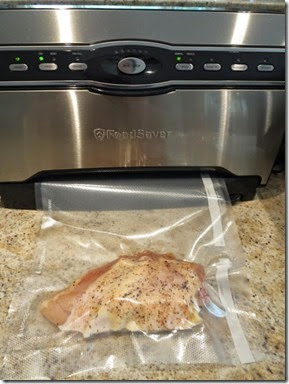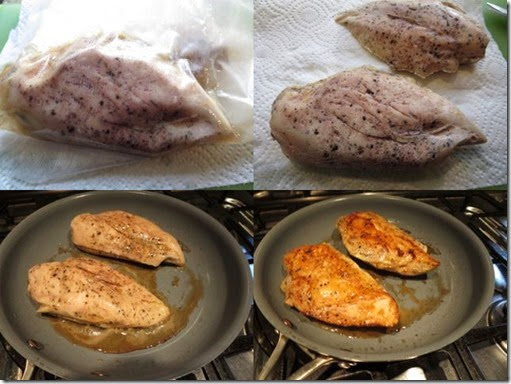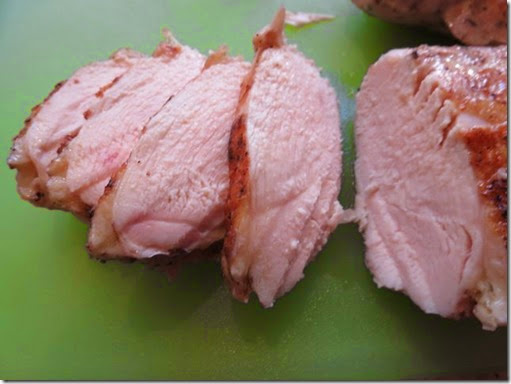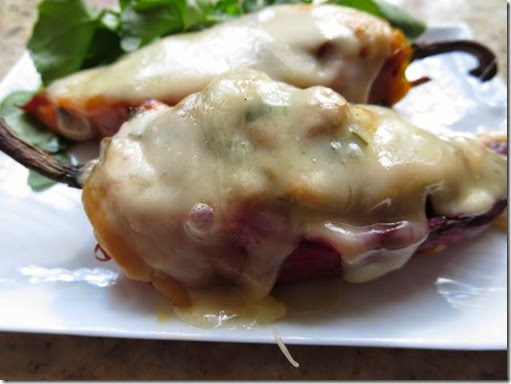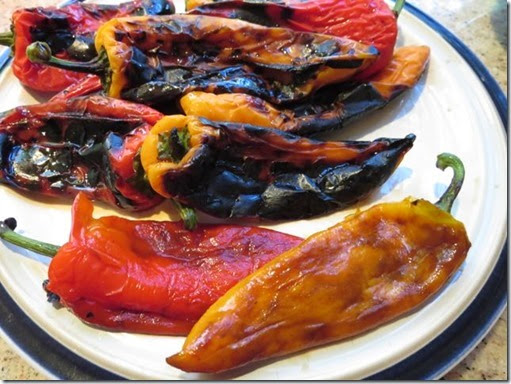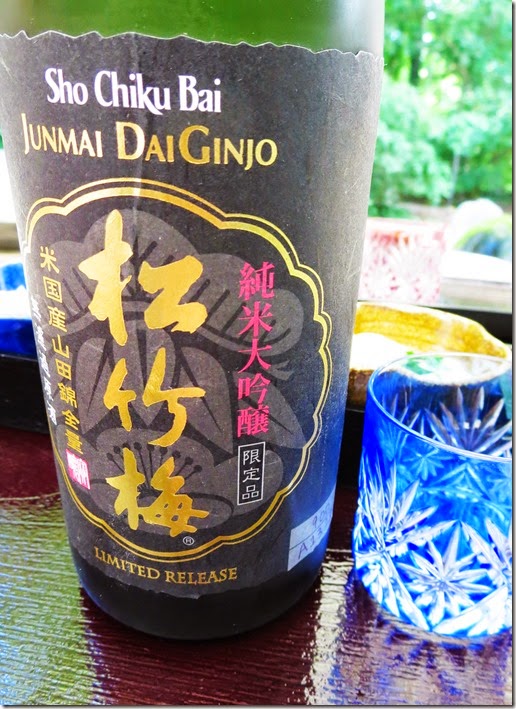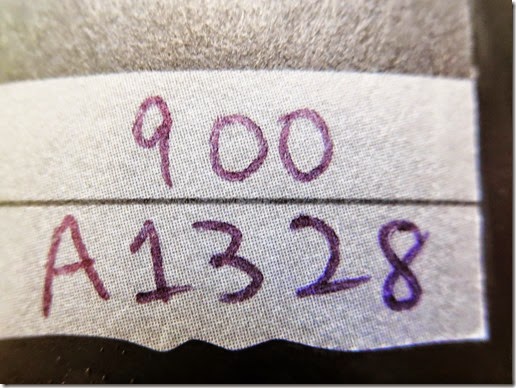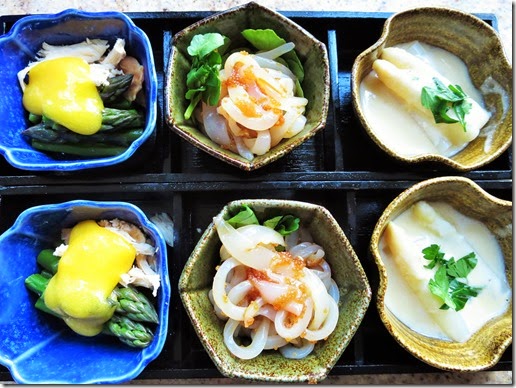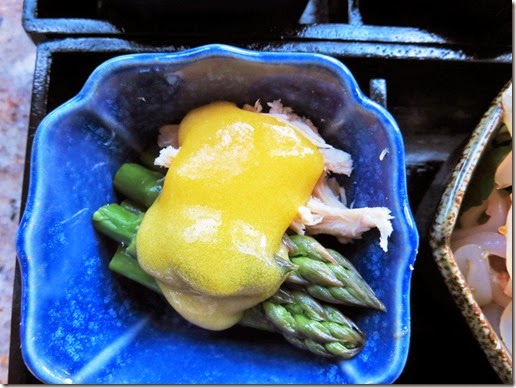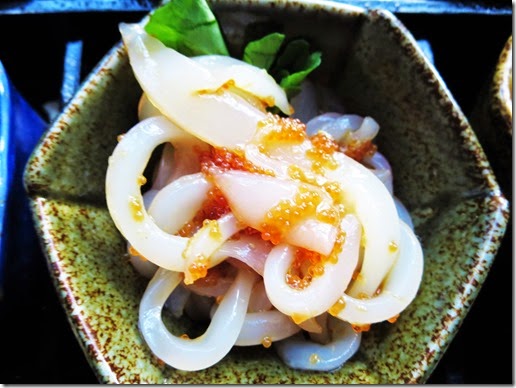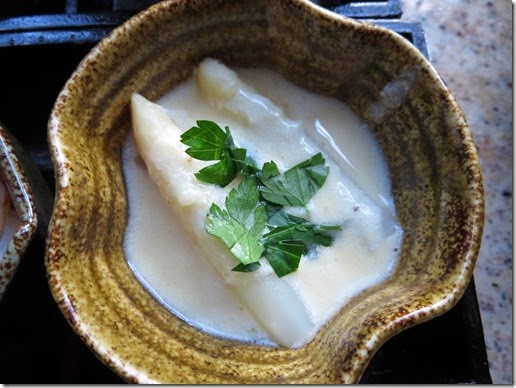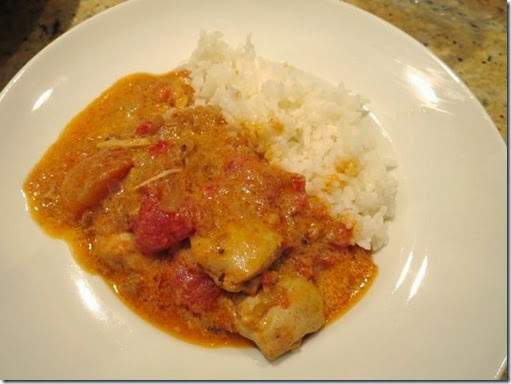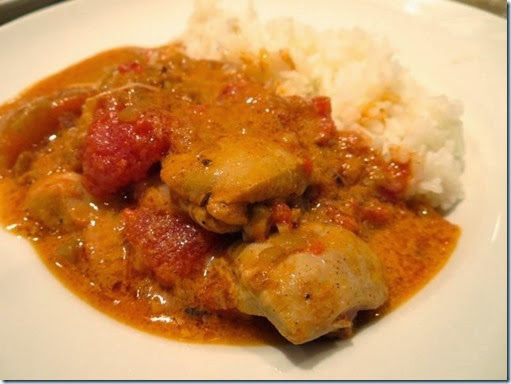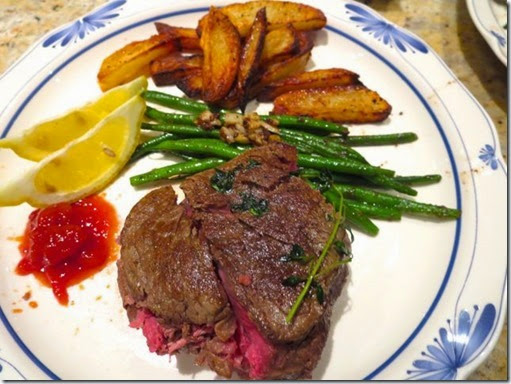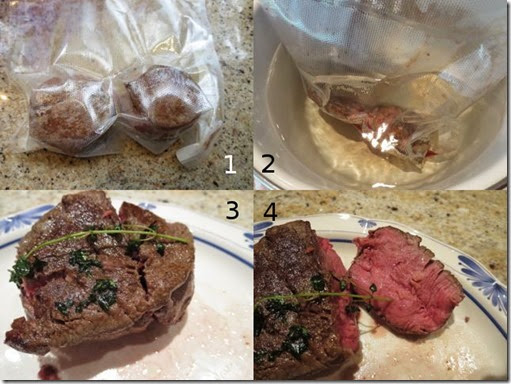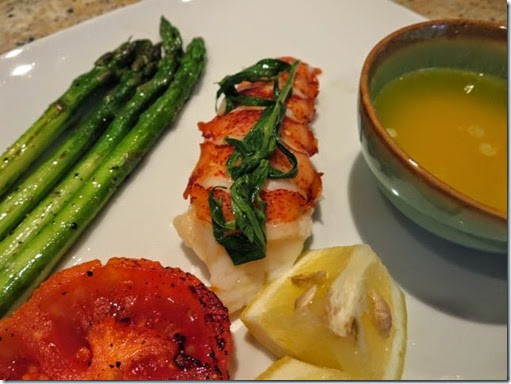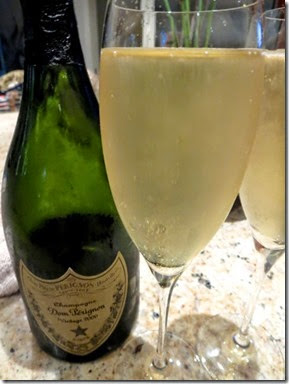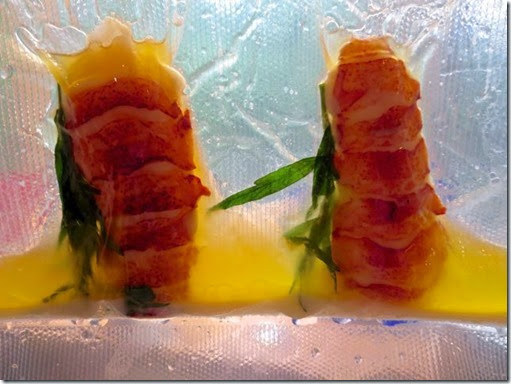After sous vide cooking at 140F (60F) for 3 hours (135 to140F for 2-3 hours according to the recipe I read). We need to consider food safety but at 135F-140F (maintained for some time) pathogenic bacteria such as salmonella should not be a problem. Cysticercus* also should not be a problem. After taking it out of the vacuum pouch, I grilled it briefly on a hot charcoal fire. I did this just because it was such a nice day, the mosquitoes are not out yet and we decided to grill using the Yakitori grill. Otherwise, I could have just briefly seared the surface using a frying pan.
* Cysticercus can be effectively eliminated by freezing. At -20C (-4F), the usual temperature of a household freezer, pork will be safe from cysticercus after one week, reportedly. (Madeleine Kamman used to say "not 20 days but after 21 days"). For heating, at 135F-140F (57-60C) maintained for 30 minutes or more, cysticercus should be also all deactivated (Reportedly 45-50C for 15-20 minutes is sufficient)
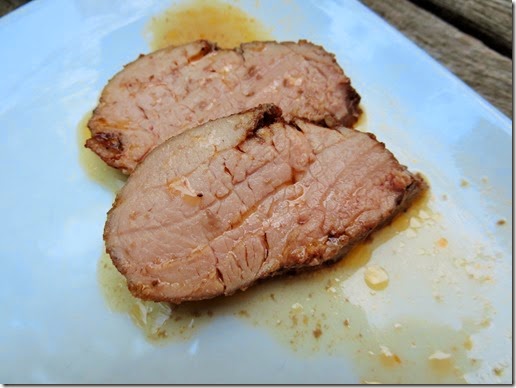
Since we had other food, we just tasted two slices each. It was quite moist and tender but the big question was "Is it better than our usual slow-baking method?" I am not sure. I may have to try it at 135F to see if that makes a significant difference.
After I generously rubbed the tenderloin with my dry rub ( cumin, smoked paprika, cinnamon, nutmeg, black pepper and salt), I vacuum packed with thin pats of unsalted butter as you can see below.
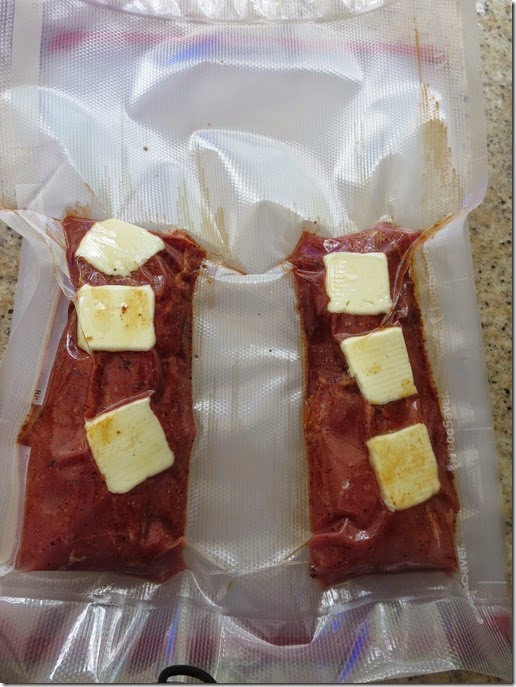
I placed this in my sous vide machine at 140F and cooked it for 3 hours. After I removed it from the pouch, I seared/grilled it over hot charcoal fire. I poured au jus (with melted butter) over the slices.
This is certainly not bad but the time and effort it takes, we are not sure if this is worth it. We may stick to our low temperature oven method.
P.S We used this pork for sandwiches several days after we cooked it. My wife commented that she detected a slightly “off” flavor to the meat and didn’t want to finish the sandwich. I got out the plastic bag in which I stored the meat and asked her to give it a “sniff test”…my wife has an extremely keen sense of smell. She recoiled from the package and said the smell was terrible; almost like ammonia. I have to say it didn’t necessarily smell bad to me, but I have learned that she can detect smells long before I can. In general it was not a good endorsement. That was the end of that tenderloin. While the tenderloin was quite all right immediately after coming out of the sous vide, it appears that it may not last as long as when we use our usual slow cook method. With that method the meat is good for up to a week. I guess the vote is in; we won’t be using sous vide for pork tenderloin again.



